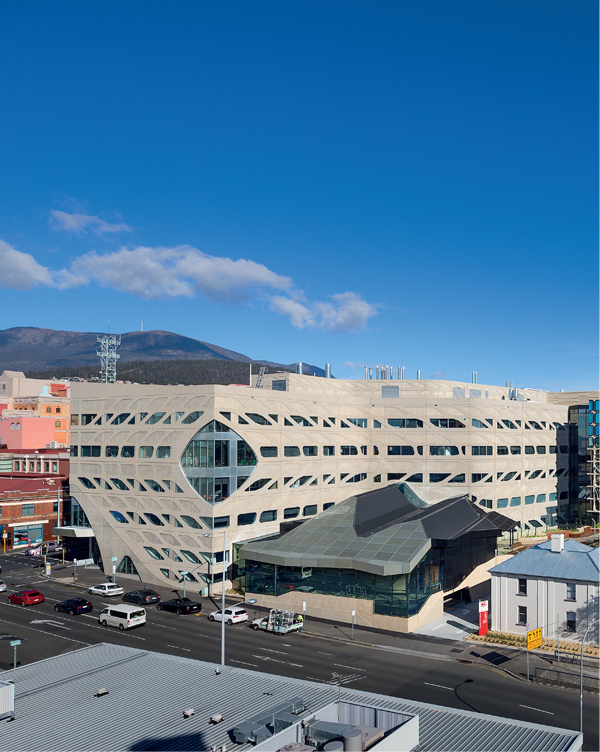Submitted by WA Contents
Medical Science 2 at the University of Tasmania
United Kingdom Architecture News - Aug 13, 2014 - 13:57 4003 views
Lyons Architecture’s innovative window system at MS2 UTAS provides conceptual links to the landscape of Hobart while supporting critical thought for the researchers within the building. This project was featured in AR135–Elements.

Location:Hobart, Tasmania
Architect:Lyons Architecture
Review:Claire McCaughan
Photography: John Gollings / Dianna Snape

The University of Tasmania’s new Medical Science 2 building is a striking addition to the street scape.
In WindowScape, Window Behaviourology, Yoshiharu Tsukamoto considers the window in relation to adjacent architectural and natural elements and concludes that the value of the element lies in the combination of practical and poetic characteristics. A ‘workaholic window’, which opens in the morning and closes at night, serves to display fruit, jewellery or chocolates to shoppers throughout the day, but also fills a street with vitality and charm. At this scale, the simple window obtains its practical and poetic features via light, framing, texture and tactility. However the retention of both functional and poetic characteristics of the window at the scale of an institutional building, within the strict parameters of client budget and brief, is another scale of investigation altogether, one that few architecture studios in Australia fully comprehend, let alone solve.

Windows set in a dynamic concrete framework create movement on the building’s futuristic facade.
Demonstrated in the Online Training Centre (2001, Victoria University), School of Botany (2003, University of Melbourne), John Curtin School of Medical Research (2009, Australian National University) and the Melbourne Brain Centre (2012, University of Melbourne), Lyons Architecture repeatedly tackle brief and budget restraints successfully to provide globally innovative architectural solutions for institutions. At the Medical Science 2 building (MS2) for the Menzies Research Institute and the University of Tasmania’s School of Medicine, Lyons was able to combine architectural elements adjacent to the window to create a window system, ensuring both functional and poetic elements of the window were retained and not removed from the project during value-management.....Continue Reading
> via Australian Design Review
